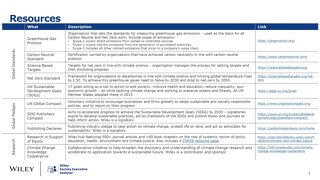one-surprising-place-you-ll-find-new-members
August 16, 2019
Many people have assumed that societies in the same academic field are competing to attract new members. If that was ever the case, the results (outlined below) of the 5th Wiley Society Membership Survey show that is no longer true.
It is true, though, that finding new members is an ongoing challenge. Researchers can now access many traditional benefits of society membership–such as networking–simply by being online, and societies lose a significant percentage of members every year to retirement (in our 2018 survey, 10% of those who didn’t renew their membership did so because they had retired the previous year, now up to 14% in our 2019 survey).
The good news is that if you’re not the first–or even the second–association that someone chooses to join, it’s not the end of the story. Let’s review the stats.
Multiple Society Membership by the Numbers
Since we started running this survey in the research community, over half (60-67%) of respondents have consistently reported being society members. Last year we started digging into how many societies a single member might decide to join. In 2018, we found that 44% were members of three or more societies, and in 2019 that number kept stable at 41%. What’s really exciting is that this year, through more detailed questions, we know much more about who makes up that 41%.
First, where members live matters: 48% of responders from the United States are members of multiple societies, making them more likely than those in any other region to belong to more than one society. Leadership and seniority are also factors: 55% of board members, 51% of those who have been a society member for over eleven years, and 43% of those with over six years of professional experience are all members of at least three societies. What’s even more interesting, though, is that multiple membership appears to be growing: 53% of this cohort joined a new society in the last twelve months.
A final added bonus? According to our sample, the more societies someone is a member of the higher their satisfaction is and the more likely they are be a champion for societies and membership to their peers.
Where Should You Look for New Members?
If your society is based in North America or Western Europe, tapping into multiple society memberships to attract new members could be particularly important. 72% of our sample from the United States are already society members, as are 67% of those in Europe. Luckily this group consists of the members who are more motivated to join more than one society, so don’t assume that the market is completely saturated. Equally, if you’re looking to draw in more experienced researchers in senior roles, they may be open to adding another membership to their CV.
The flip side of this good news is that most of those who have joined a new society in the past twelve months (and our survey shows that 11% have) are also likely to have left another society in order to do so. So, it’s important not to get too complacent.
Finally, if you’re going after already active members in those mature Western markets, don’t lose sight of opportunities elsewhere. Our survey also suggests that what a tenured professor in New York City or a senior researcher in Germany want from society membership can be pretty different from what attracts researchers who are still getting established–especially those in Africa and countries in Central Asia, like India. These latter groups also have significant potential for member growth (more on that in a future post).
Finding the Right Strategy
So where does all this leave societies who want to keep fit for the future? As trends go, there’s still plenty to explore about multiple membership. For example, is there is an ideal number of societies people prefer to be a member of or, indeed, a maximum? What factors do people weigh when they’re deciding whether to join a second or a third organization, and what makes the difference in a decision to drop an existing membership? Do members typically have one society they’re actively involved with and then join others mostly for that attractive discount on the conference fee?
For now, though, if you’re based in the West and your membership is mostly located there as well, don’t assume your only source of member growth will come from recruiting internationally or by attracting more early careerists. At the very least, the popularity of multiple membership can help offset natural member churn due to retirements and relocations. Multiple membership is also a great reason to pursue more collaboration with other organizations in your field, and yet another example of why scholarly societies can help safeguard their sustainability by finding find new ways of working together and supporting their common goals.











